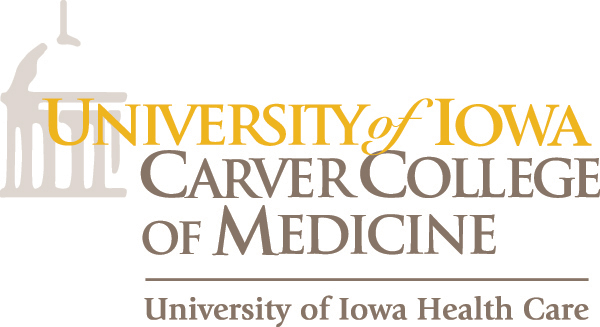Drug repositioning—taking known drugs and identifying new applications for them—is an attractive concept for speeding up the process of bringing drugs to human testing for unmet medical needs.
In a new study, published online in Annals of Clinical and Translational Neurology, University of Iowa researchers led by Alexander Bassuk, MD, PhD, UI professor of pediatrics and neurology, use a multidisciplinary strategy that combines gene expression profiling and bioinformatics to identify a list of around 90 drugs, all of which already are approved by the Food and Drug Administration (FDA) for use in people or animals, that may also have potential as anti-seizure treatments.
Hope for many with epilepsy
“Taking a new look at medicines that are already approved for clinical use may help identify treatments that could reduce seizures and improve the quality of life for people with epilepsy who have been unable to find effective therapies,” said Vicky Whittemore, PhD, program director at the National Institute of Neurological Disorders and Stroke (NINDS), which funded the study.
The UI team tested candidate drugs from the list in a zebrafish model of seizures and found that three—a diabetes drug, a hypertension medication, and an antiparasitic therapy—significantly reduced seizure-like movement in the fish.
“The long timeline and high cost of drug development is a particularly acute issue for a life-altering disease like epilepsy where up to one-third of patients are not completely helped by the medications we currently have,” says Bassuk, who also is division director of pediatric neurology and a member of the Iowa Neuroscience Institute (INI). “The question here was could we use novel techniques to identify potential new treatments more quickly than via traditional drug discovery and development routes.”
A unique starting point
A unique feature of the UI study, according to Bassuk, was the ability to use live human brain tissue from patients with epilepsy as a starting point.
The tissue was collected by UI neurosurgeons (led by Matthew Howard, MD, UI professor and DEO of neurosurgery) from six patients undergoing specialized surgery to remove brain areas causing seizures. This type of surgery is a treatment option for people with epilepsy whose seizures can’t be controlled by medications.
The patients agreed to allow use of the tissue in the study. During the surgery, the neurosurgeons placed electrodes on the patient’s brain to determine which areas to remove. These electrodes also allowed the surgeons to distinguish which parts of the removed tissue were seizing and which areas, also contained within the removed tissue, were behaving normally.
Computational psychiatry researchers Jacob Michaelson, PhD, and Leo Brueggeman analyzed gene expression for more than 25,000 genes in the brain tissue, and discovered strikingly different expression patterns in the diseased (seizing) tissue compared to non-seizing tissue. They then compared these expression signatures to a large database known as a connectivity map, which contains gene expression patterns produced by the action of drugs on cells. The comparison identified 184 compounds that were deemed potentially therapeutic because they produced patterns that were essentially the reverse of the seizure expression pattern.
Many medications already FDA-approved
Of the 184 compounds, 91 are already FDA-approved for human use, although not for treating seizures or epilepsy.
“That’s pretty exciting because those are drugs that don’t necessarily have to go through all the initial stages of safety testing because they are already approved for use in humans,” Bassuk says.
The team also found compounds that they predicted would cause seizures because they induced a gene expression signature that was very similar to the one observed in the diseased brain tissue.
Using sophisticated network analysis techniques, the scientists showed that previously published literature supported many of their predictions. The analyses also grouped the expression profiles into three clusters, which highlight alterations in myelination, protein degradation, and cell migration as cellular processes likely to underlie epilepsy.
Testing on zebrafish
Finally, the team enlisted the expertise of Robert Cornell, PhD, UI professor of anatomy and cell biology, and UI graduate student Morgan Sturgeon, experts in zebrafish models of disease, to test the anti-seizure effects of four of the most promising compounds in a zebrafish model of seizures. Three of the drugs showed significant anti-seizure properties in the fish: metformin, a commonly used diabetes medication; nifedipine, a blood pressure drug; and pyrantel tartrate, an antiparasitic therapy. These drugs all are FDA-approved, but none are specifically approved for treating seizures or epilepsy.
“This study took a very exciting tour from living human brain tissue, to gene expression, to advanced informatics with big data, to validation of drugs with a new purpose in a fish model,” says Michaelson, UI associate professor of psychiatry and a member of the INI. “Now we have a short list of medications that could give hope to people who have seizures that are not effectively treated by traditional medications.”
Bassuk is also excited by the possibility of eventually moving some of the drugs into clinical trials, but he notes the importance of proceeding cautiously.
Next steps
“Zebrafish are a great model of testing the anti-seizure effect of these drugs quickly and cheaply, but they are not mammals,” he says. “We would like to test the remaining about 90 drugs in zebrafish, and then in a mouse model. Any drugs that pass both of these tests could theoretically go on to clinical trials in patients with epilepsy.”
The research team also included Andrew Grossbach, MD, Yasunori Nagahama, MD, and Hiroto Kawasaki, MD, PhD, of the UI Department of Neurosurgery; Shu Wu in the UI Stead Family Department of Pediatrics; Russell Martin in the UI College of Engineering; and Angela Zhang at the University of Washington in Seattle.
The research was supported in part by a grant from the NINDS (NS098590).
All the study authors have a patent pending related to the use of the drugs and approach described in the study for epilepsy.

